The Series with Elastic Extents Problem (SWEEP)
"Gerrymandering" Urban Time Series
Sam Stehle / @sam_stehle
Building City Dashboards
National Centre for Geocomputation, Maynooth University, Maynooth Ireland
GISRUK 2019, Newcastle University
The Modifiable Areal Unit Problem
Parallels in time: The SWEEP
Dublin Sound monitoring
http://dublincitynoise.sonitussystems.com/applications/api/dublinnoisedata.php?location=7&start=1554218025&end=1554822825
Public Reporting
Dublin Agglomeration Environmental
Noise Action Plan (Nov. 2018)
| Threshold (db) | Daytime (07:00 - 19:00) | nighttime (23:00 - 07:00) | Quiet Area | <55 | <45 | Desirable Low | <55 | <50 | Undesirable High | >70 | >55 |
|---|
testing for SWEEP effects
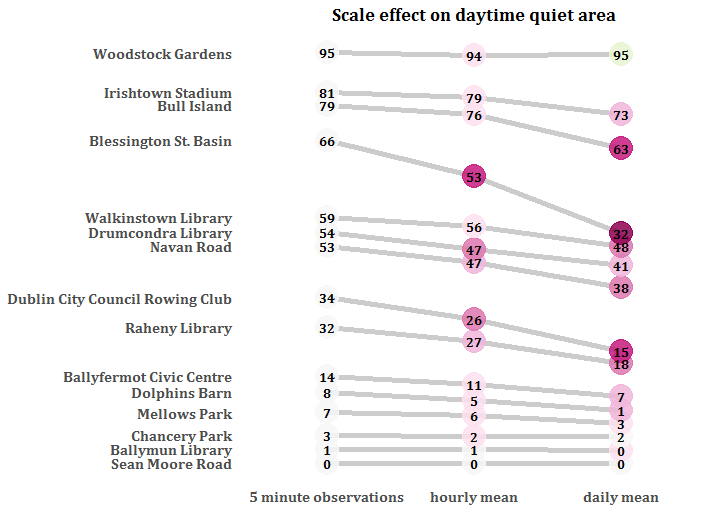
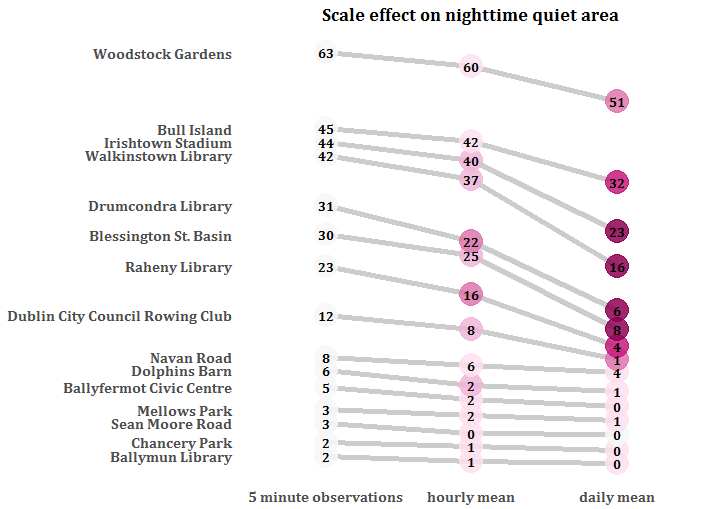
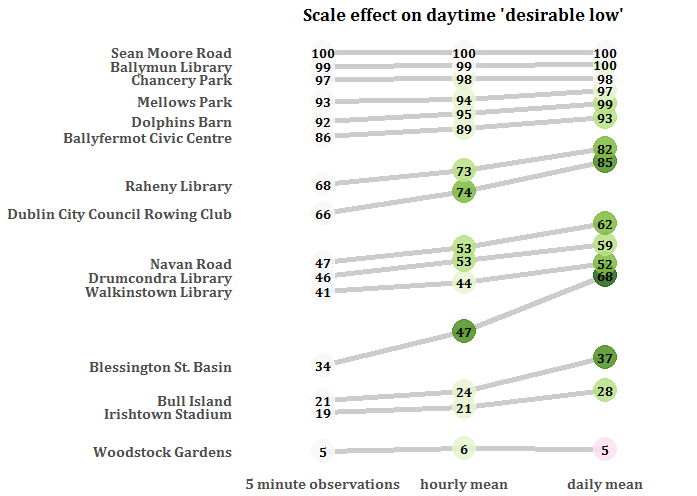
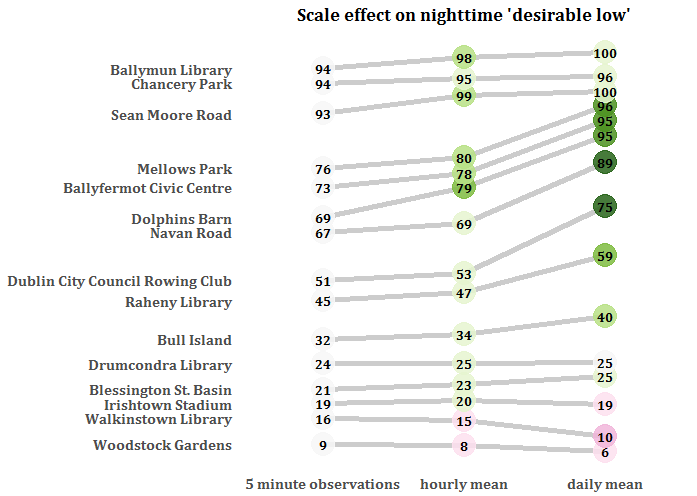

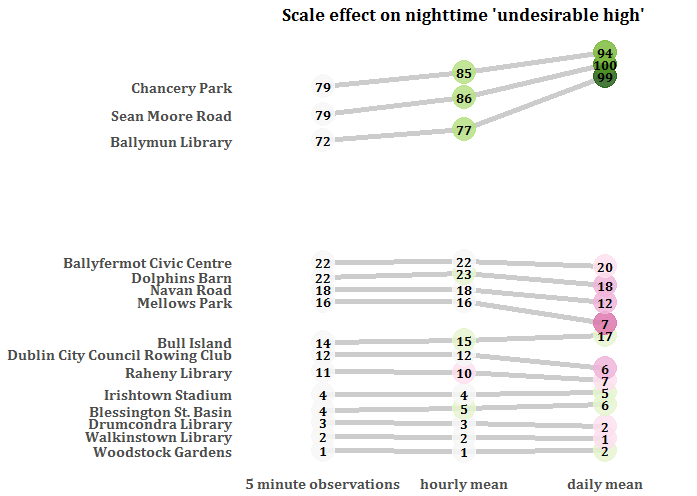
Blessington Street Basin
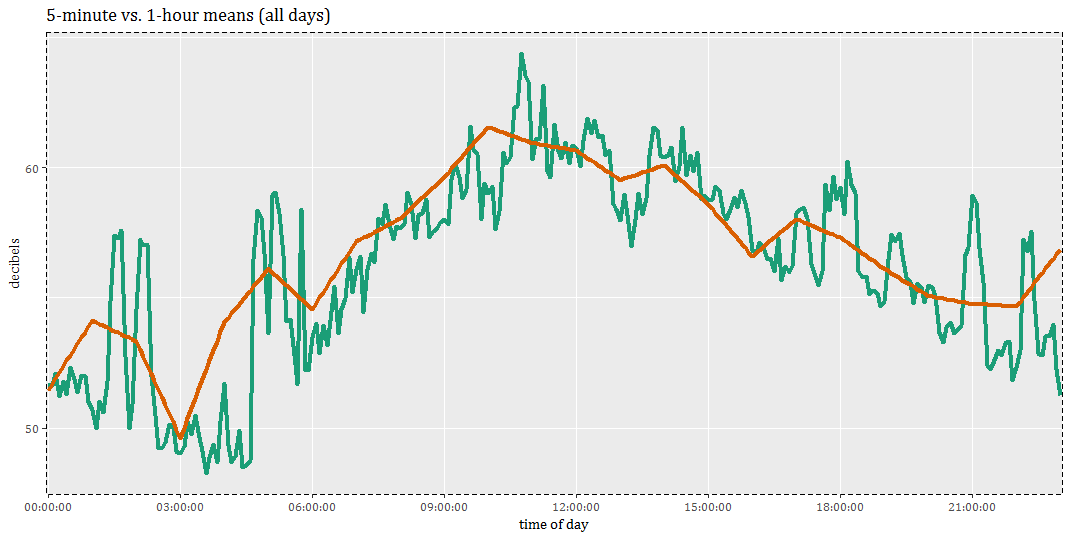
Blessington Street Basin
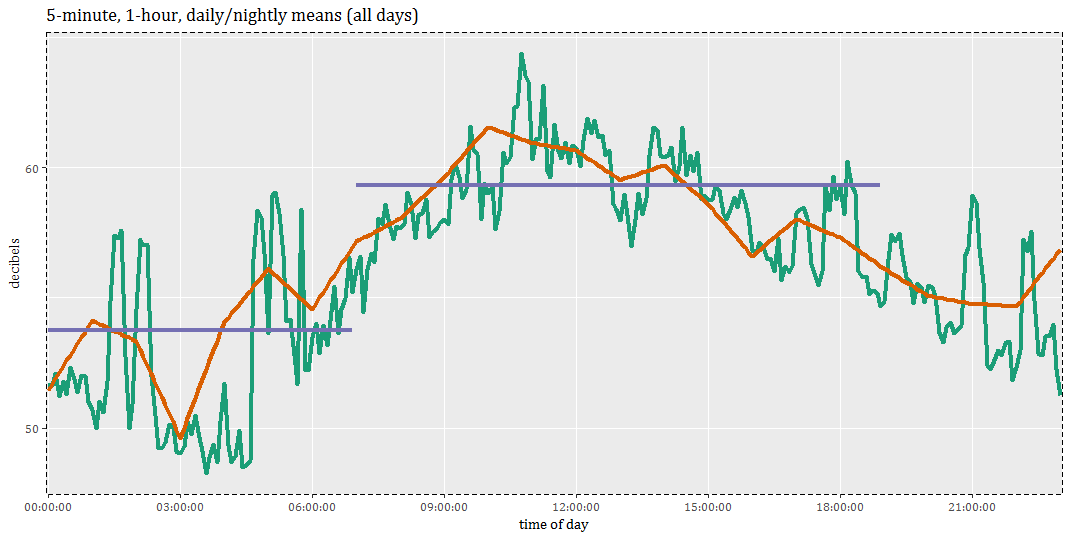
Blessington Street Basin
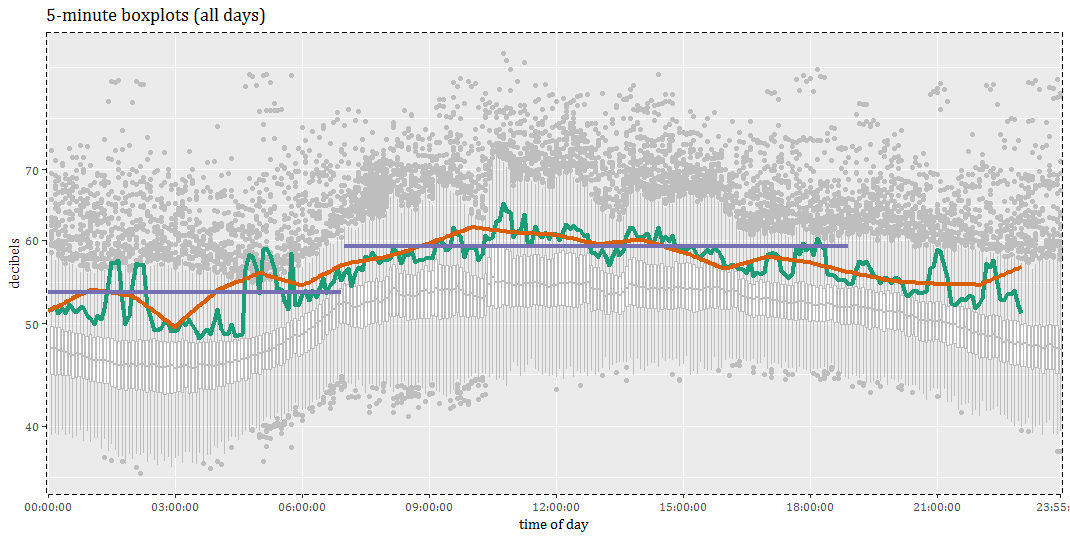
Blessington Street Basin

mean skewness of 5-minute observations = 0.251
Implications of scalar SWEEP effects
except in extreme cases, aggregating yields higher mean db values
meaning more frequent passing of high thresholds
and less frequent satisfaction of quiet area thresholds


1-hour aggregation as 12 segmentations
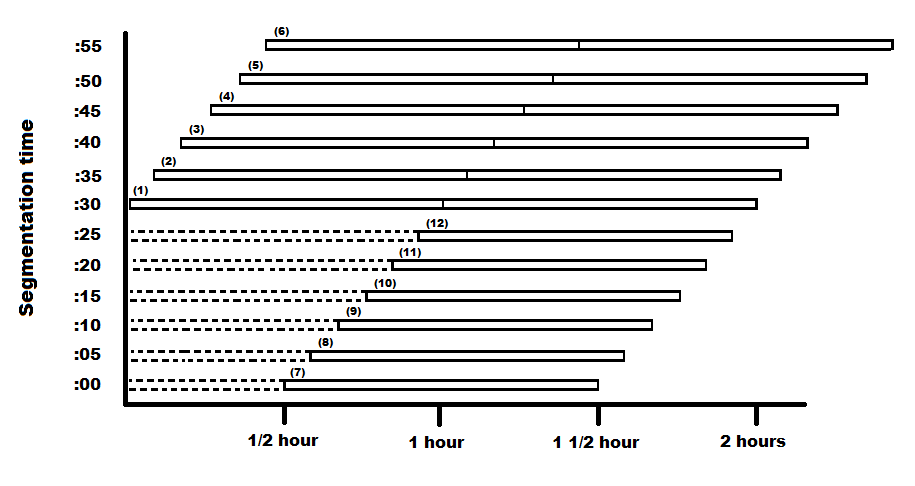
Segmentation effects
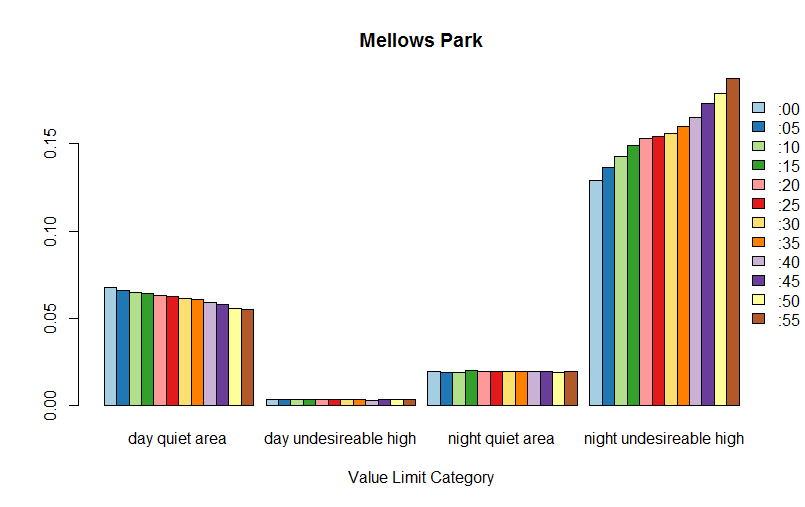
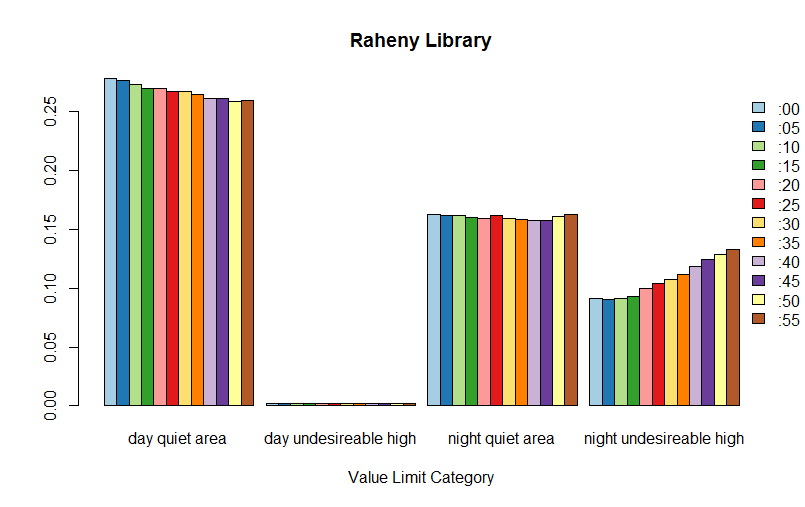
segmentation effects


mean time of day of :00 segment: 11:30
mean time of day of :55 segment: 12:25
segmentation and trend
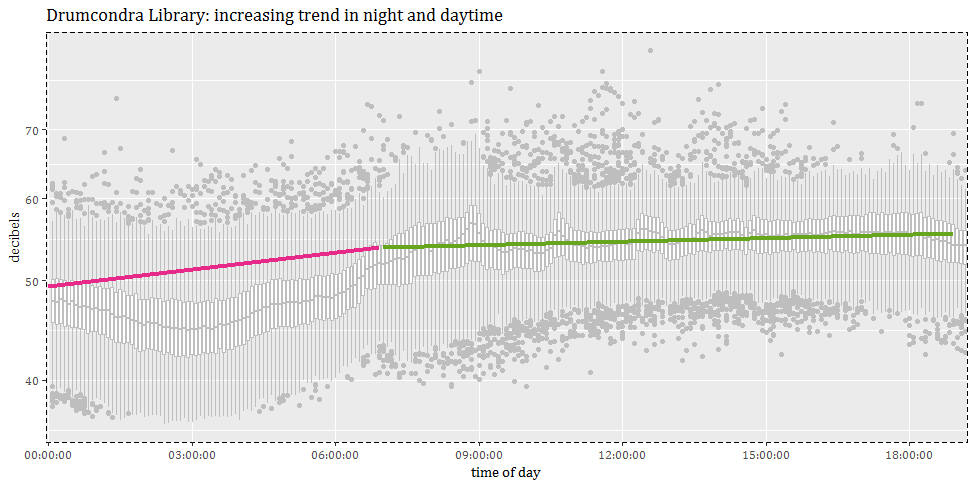
segmentation and trend
| Stations with quiet area SWEEP effect | Stations with undesirable high SWEEP effect | observations with increasing trend | Daytime | 67% | 20% | 49.4% | Nighttime | 80% | 73% | 79.7% |
|---|
implications of segmentation effects
anything more than a theoretical exercise?
while space is continuous, time is discretised, forming logical boundaries

considering intent: gerrymandering time series
- Communication: portray low sound to the public
- report disaggregated observations
- Incentive/Disincentive schemes: reward low/punish high sound
- no more cynical than political gerrymandering
